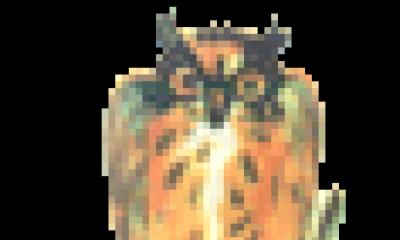The large-scale structure of the universe resembles a system of veins and filaments separated by voids.
The large-scale structure of the Universe is a cosmological term denoting the structure of the distribution of matter in the Universe at the largest.
An example of the simplest structure in outer space is the planet-satellite system. In addition to the two planets closest to the Sun (Mercury and Venus), all the rest have their own satellite, and in most cases not even one. If only the Moon accompanies the Earth, then whole planets revolve around Jupiter, although some of them are quite small. However, together with their satellites of the planet solar system revolve around the sun, forming the so-called planetary system.

As a result of observations, astronomers have found that most other stars are also part of planetary systems. At the same time, the luminaries themselves also often form systems and clusters, which are called stellar. According to the available data, the predominant part of the stars are, or with a multiple number of stars. In this regard, our Sun is considered atypical, since it does not have a pair
If we consider the circumsolar space on a larger scale, it becomes obvious that all star clusters, together with their planetary systems, form a star island, the so-called.
History of the study of the structure of the universe

For the first time, the outstanding astronomer William Herschel thought about the idea of a large-scale structure of the Universe. It is he who owns such discoveries as the discovery of the planet Uranus and its two satellites, two satellites of Saturn, the discovery of infrared radiation and the idea of the solar system through space. Having independently designed a telescope and made observations, he performed volumetric calculations of luminaries of different brightness in certain areas of the sky and came to the conclusion that there are a large number of star islands in outer space.
Later, at the beginning of the 20th century, the American cosmologist Edwin Hubble was able to prove that some nebulae belong to structures other than the Milky Way. That is, it was reliably known that various star clusters also exist outside our galaxy. Research in this direction soon greatly expanded our understanding of the universe. It turned out that in addition to the Milky Way, there are tens of thousands of other galaxies in outer space. In an attempt to compile some simplified map of the visible universe, scientists stumbled upon the remarkable fact that galaxies in space constitute other structures of unthinkable dimensions.

Over time, scientists discovered that lone galaxies are a fairly rare occurrence in the universe. The vast majority of galaxies form large-scale clusters, which can be of various shapes and include two galaxies or a multiple, up to several thousand. In addition to huge stellar islands, these massive stellar structures also include accumulations of gas heated to high temperatures. Despite the very low density (thousands of times less than in the solar atmosphere), the mass of this gas can significantly exceed the total mass of all stars in some sets of galaxies.
The obtained results of observations and calculations led scientists to the idea that clusters of galaxies can also form other larger structures. Following this, two intriguing questions arose: if the galaxy itself, a complex structure, is part of some larger structure, then can this structure be part of something even larger? And, in the end, is there a limit to such a hierarchical structure, when each system is part of another?

A positive answer to the first question is confirmed by the presence of superclusters of galaxies, which in turn outgrow galactic filaments, or as they are otherwise called "walls". Their average thickness is about 10 million St. years, and the length is 160 - 260 million light years. However, answering the second question, it should be noted that superclusters of galaxies are not some kind of isolated structure, but only denser sections of galactic walls. Therefore, today scientists are confident that it is the galactic filaments (walls), the largest cosmic structures, mixed with voids (empty space free from star clusters) that form the fibrous or cellular structure of the Universe.
The position of the earth in the universe
Slightly deviating from the topic, we indicate the position of our planet in such a complex structure:
- Planetary system: solar
- local interstellar cloud
- Galactic Arm of Orion
- Galaxy: Milky Way
- Cluster of galaxies:
- Supercluster of galaxies: Local Supercluster (Virgo)
- Supercluster of galaxies: Laniakea
- Wall: Pisces-Whale Supercluster Complex
Modern research results state that the Universe consists of no less than 200 billion galaxies. Galactic walls by their nature are relatively flat and constitute the walls of the "cells" of the Universe, and the places of their intersection form superclusters of galaxies. In the center of these cells are voids (English void - emptiness).
Analysis of the three-dimensional model of the distribution of galaxies formed by scientists suggests that the cellular structure is observed at a distance of more than a billion light years in any direction. This information suggests that on a scale of several hundred million light years, any fragment of the universe will have almost the same number substances. And this proves that the universe is homogeneous on the indicated scales.
Causes of the Large-Scale Structure of the Universe
Despite the presence of such large-scale structures as galactic walls and filaments, clusters of galaxies are still considered the largest stable structures. The fact is that the well-known expansion of the Universe gradually stretches the structure of any objects, and only gravity can fight this force. As a result of observations of clusters and superclusters, such a stunning effect as "" was discovered. That is, the rays passing through interstellar space are bent, which indicates the presence of a huge invisible, hidden mass in it. It may belong to various unobservable cosmic bodies, but on such scales it most likely belongs to

Einstein's cross is a gravitationally lensed quasar
Based on the almost homogeneous, scientists are convinced that the matter in the Universe should be evenly distributed. But the peculiarity of gravity is that it tends to pull any physical particles into dense structures, thereby violating uniformity. Thus, some time after the Big Bang, minor inhomogeneities in the distribution of matter in space began to increasingly converge into some structures. Their increasing gravity (due to the increase in mass per volume) gradually slowed down the expansion until it stopped it altogether. Moreover, in some parts, the expansion turned into contraction, which caused the formation of galaxies and galaxy clusters.
This model was tested using computer calculations. Given the very slight fluctuations (oscillations, deviations) in the homogeneity of the cosmic microwave background radiation, the computer calculated that the same small fluctuations in after the Big Bang with the help of gravity could well give rise to clusters of galaxies and a cellular large-scale structure of the Universe.

















Description of the presentation The place of the Earth in the universe. Here are the approximate scales for the slides
The solar system, on it the Earth looks like a small dot, because only the distance to the Sun is about 150 million kilometers (and here it looks like a small segment). Already on these scales, the distance begins to be measured in time, for light travels these distances. 1 light second is equal to 300 thousand km.
nearby stars. The distances between the nearest stars are much larger than the sizes of stellar systems. The closest star to ours is Alpha Centauri, about 4 light-years away. This is approximately 120 -130 million light seconds or about 40 trillion kilometers.
Local galactic group. This is a gravitationally bound group of more than 40 galaxies near ours (usually it includes about 50 -60 galaxies). Gravitational bonding means that their attraction to each other significantly affects their movement. In space, galaxies do not live alone, but are always located in similar groups. The characteristic distance between galaxies in one group is much larger than the size of one galaxy - millions of light years. The nearest large galaxy, the Andromeda Nebula, is 2 million light-years away. In the picture, it is to the right of ours. Closest to us are two dwarf galaxies - the Large and Small Magellanic clouds, they are about 150 thousand light-years away, in the figure they are shown very close to ours (bottom right and bottom left).
Local galactic supercluster. Groups of galaxies gather into superclusters from adjacent groups. More about supragalactic structures will be in another lecture. Superclusters form galactic filaments - filamentous and flat-shaped objects consisting of clusters of galaxies.
Nearest superclusters. Galactic filaments form the cellular structure of the universe. The walls of the cells are composed of different superclusters, and the interiors are empty. When you zoom in, the universe resembles a honeycomb.
The observable universe (metagalaxy). The observable universe is much smaller than the entire universe that emerged from the big bang. However, it is quite difficult to judge the size of the entire universe, and estimates of its size are made using different models Theories of the Big Bang. The area indicated in the previous figure looks like a small dot here.
The Big Bang Theory. Why do scientists believe that the universe began with an explosion? Astronomers present three very different lines of reasoning that provide a solid foundation for this theory. Let's look at them in more detail.
1. The observed expansion of the universe. Discovery of the expansion of the Universe. Perhaps the most compelling evidence for the Big Bang theory comes from a remarkable discovery made by the American astronomer Edwin Hubble in 1929. Prior to this, most scientists considered the universe to be static - unmoving and not changing. But Hubble found that it is expanding: groups of galaxies are flying apart from one another, just like fragments are scattered in different directions after a cosmic explosion. It is obvious that if some objects fly apart, then once they were closer to each other. By tracing the expansion of the universe back in time, astronomers have come to the conclusion that about 14 billion years ago. The universe was an incredibly hot and dense formation, the release of tremendous energy from which was caused by an explosion of colossal force.
2. Relic radiation. Discovery of the cosmic microwave background. In the 1940s, physicist Georgy Gamow realized that the Big Bang must have generated powerful radiation. His collaborators also suggested that the remnants of this radiation, cooled by the expansion of the universe, may still exist. In 1964, Arno Penzias and Robert Wilson of AT&T Bell Laboratories, while scanning the sky with a radio antenna, discovered a faint, uniform crackle. What they first thought was radio interference turned out to be a faint "rustling" of radiation left over from the Big Bang. This is a homogeneous microwave radiation penetrating all outer space (it is also called relic radiation). The temperature of this cosmic microwave background is exactly what astronomers would expect it to be (2.73 degrees Kelvin) if the cooling has been uniform since the Big Bang. For their discovery, A. Pentzias and R. Wilson in 1978 received Nobel Prize in physics.
3. The abundance of helium in space. Astronomers have found that in relation to hydrogen, the amount of helium in space is 24% (the rest chemical elements reportedly less than 2% in the universe). Moreover, nuclear reactions inside stars do not take long enough to create so much helium. But there is just as much helium as theoretically should have been formed during the Big Bang. The content of chemical elements is determined by the analysis of radiation from space objects (mainly stars). As it turned out, the Big Bang theory successfully explains the phenomena observed in space, but remains only a starting point for studying the initial stage of the development of the Universe. For example, this theory, despite its name, does not put forward any hypotheses about the source of "cosmic dynamite" that caused the Big Bang.
If we assume that 1 year has passed since the Big Bang until now, we can make the following calendar of events for this year: New Year, January 1, 0 h 00 m 00 s - Big Bang the first atoms March the first galaxies formed April Our galaxy was formed June the process of galaxy formation was basically completed September The emergence of the Sun The emergence of the solar system October The emergence of life (microorganisms) November Microbiota, the emergence of photosynthesis December, 1 -5 The formation of an oxygen atmosphere 15 The first multicellular 20 The emergence of invertebrates 26 The first dinosaurs 27 First mammals 28 First birds 29 Extinction of dinosaurs 30 First primates December 31, 14 h Ramapithecus 22 h 30 m First humans New Year January 1, 00 h 00 m 03 s - XX century.
The evolution of matter in the Metagalaxy: 1. Atomic nuclei 2. Atoms 3. Molecules (the most complex molecules of the interstellar medium contain up to 13 atoms) 4. Dust particles, particles of matter containing up to 100 atoms 5. Giant polymer molecules 6. Single-celled living organisms 7. Chordates (vertebrates) 8. Man
Scenarios of the fate of the universe. The options for the development of the universe are calculated on the basis of the general theory of relativity - modern theory gravity. The universe is viewed in a simplified way as a large uniform expanding ball. Such models envision three futures – contraction, decelerating expansion, and accelerating expansion. At present, the average density of galactic matter is r g = 3 × 10 -31 g/cm 3 , however, the mass of each galaxy is much greater than the total mass of all objects observed in it. Visible matter is less than 5% of the density of the Metagalaxy, and invisible, "dark", of an unknown nature - over 95%! It has now been established that about 20-25% are the types of matter known to us (molecular clouds, remnants of stars, dwarf stars that are difficult to see, and similar objects). And 75% of the unknown mass is so "dark matter", the nature of which is still unknown. The first attempts to study the distribution of the hidden matter in the space of the Metagalaxy showed that it is inhomogeneous and has a complex fiber-like structure. These fibers are commonly referred to as "hair". The future depends on the exact value of the density of the universe and on the magnitude of dark energy - energy of an unknown nature, which is evenly distributed in space and enhances the expansion of our universe. It is known that if our models are correct, then the density of our universe is close to critical (if it is greater, then there should be compression, if less, then slowing down expansion). However, in recent decades, dark energy has been discovered, which makes up about 75% of the energy of the entire universe, and the remaining 25% falls on known types of matter (about 4-5%) and dark matter (about 20%). Dark energy is causing our universe to expand at an accelerating rate. The further fate of our universe depends on how great this acceleration is. There are 2 options - the eternal accelerated expansion and the "end of the world". In the second case, the universe will not exist forever, its matter, space and time will be completely destroyed after some time by accelerated expansion.
How can the "end of the world" happen? This scenario assumes reaching an infinite expansion rate in a finite time. This means the complete destruction of matter, space and time in our universe, in order to understand what this means, you need to know what was before the Big Bang. The first signs of the end of the world will be visible in the sky - the stars will turn red at first, and then we will stop seeing them. At first, this will happen with more distant stars and galaxies, then with those nearby. Then the expansion will reach such a speed as to start tearing the Earth away from the Sun, but we will not have time to freeze, as the Earth will begin to collapse. The destabilization of the earth's crust and core will cause massive earthquakes, volcanic activity, new cracks in the earth's crust. We will expect massive cataclysms associated with this - for example, tsunamis caused by earthquakes, huge fires due to volcanic eruptions. In the end, life on the planet will be destroyed as a result of the destruction of the earth's crust. Hot lava will come to the surface and everything will burn, even the oceans will evaporate. After that, even matter and atoms, space and time will disintegrate. The entire universe will cease to exist (perhaps it will return to some state unknown to us, which was before the Big Bang). If Linde's theory of cosmic inflation (the most popular on this moment among modern theoretical physicists), then the Big Bang is simply the emergence of a bubble in the primary vacuum, which is constantly “boiling”. Bubble-universes form all the time (for each of them this is the moment of the Big Bang) and disintegrate, the disintegration of one bubble can be described by such a doomsday.
To ancient people, the Earth seemed huge. After all, no one managed to get around it on foot or even go around on a horse. Therefore, philosophers of antiquity, thinking about the structure of the Universe, placed the Earth at its center. All celestial bodies, they believed, revolve around the Earth.
AT modern world when there is aviation and spaceships, the idea that our planet is not at all the center of the universe does not seem seditious to anyone.
However, this idea was first expressed in the 3rd century BC. Aristarchus of Samos. Unfortunately, almost all the works of this ancient Greek scientist have been lost and are known to us only in the retelling of his contemporary Archimedes. Therefore, the assumption that the Earth revolves around the Sun (and not the Sun around the Earth) is usually associated with the name of the Polish astronomer Nicolaus Copernicus, who lived in the 15th-16th centuries. Copernicus arranged the planets of the solar system known to him as follows: Mercury, Venus, Earth, Mars, Jupiter and Saturn revolve around the Sun, and the Moon around the Earth. But farther beyond Saturn, Copernicus placed the "sphere of fixed stars" - a kind of wall that closes the universe. And Copernicus could not guess what was behind it - for this he did not have enough data. You should not accuse Copernicus of myopia, because the telescope that brought distant space closer to us was first used by Galileo only a hundred years later. 
The ancient Greek scientist Ptolemy developed a model of the Universe in which the Earth was at the center of the universe, and the rest of the celestial bodies revolved around it.
Modern science knows that our Sun is one of the countless stars in the Universe, not the biggest, not the brightest, not the hottest, moreover, the Sun is far from the center of our Galaxy - a giant cluster of stars, to which the Sun belongs. And in this we are lucky. After all, otherwise such streams of cosmic rays would fall on the Earth that life would hardly have arisen on it. 9 large planets revolve around the Sun, small planets - asteroids, comets and very small "pebbles" - meteoroids. All these together form the solar system. 
By modern ideas There are 9 major planets revolving around the Sun. The 4 closest to the Sun are small and hard. Next lies the belt of minor planets (asteroids), and behind it are the giant planets, consisting mainly of liquids and gases. Pluto, the furthest known planet in the solar system, is also the smallest and coldest.
Earth is one of 9 planets. Not the largest, but not the smallest, not the closest to the Sun, but not the farthest either. The largest planet is Jupiter. Its mass is 318 times that of the earth. But Jupiter doesn't have a solid surface to walk on. The planet farthest from the Sun, Pluto is almost 40 times farther from the Sun than the Earth. Its surface is solid, it would be easy to walk on it - Pluto is smaller than the Moon, it attracts weakly. It's just cold there: the temperature is 200-240°C below the freezing point of water. Under such conditions, not only water, but also most gases become solid. But on Venus, our closest neighbor, the temperature is above +450°C. It turns out that the Earth is the only planet in the Universe so far suitable for life.
From the Earth to the Sun about 150 million km. Is it a lot or a little? Let's compare this distance with the sizes of the Sun and the Earth. The diameter of the Sun is about 100 times smaller, and the diameter of the Earth is 10,000 times smaller. This means that if we depict the Sun as a circle with a diameter of 1 cm (with a coin worth 1 ruble), then we will have to draw the Earth at a distance of 1 m (at the other end of a large table), and it will be barely noticeable accurate.
Planet Earth, solar system, and all stars visible to the naked eye are in Milky Way Galaxy, which is a barred spiral galaxy with two distinct arms beginning at the ends of the bar.
This was confirmed in 2005 by the Lyman Spitzer Space Telescope, which showed that our galaxy's central bar is larger than previously thought. spiral galaxies barred - spiral galaxies with a bar ("bar") of bright stars, emerging from the center and crossing the galaxy in the middle.
Spiral arms in such galaxies start at the ends of the bars, while in ordinary spiral galaxies they emerge directly from the core. Observations show that about two-thirds of all spiral galaxies are barred. According to existing hypotheses, the bars are centers of star formation, supporting the birth of stars in their centers. It is assumed that by means of orbital resonance, they pass gas from the spiral branches through them. This mechanism provides the influx of building material for the birth of new stars. The Milky Way, together with the Andromeda (M31), Triangulum (M33), and over 40 smaller satellite galaxies, form the Local Group of Galaxies, which in turn is part of the Virgo Supercluster. "Using infrared imaging from NASA's Spitzer telescope, scientists have discovered that the Milky Way's elegant spiral structure has only two dominant arms from the ends of the central bar of stars. Our galaxy was previously thought to have four main arms."
/s.dreamwidth.org/img/styles/nouveauoleanders/titles_background.png" target="_blank">http://s.dreamwidth.org/img/styles/nouveauoleanders/titles_background.png) 0% 50% no-repeat rgb(29, 41, 29);"> Structure of the GalaxyBy appearance, the galaxy resembles a disk (because the bulk of the stars are in the form of a flat disk) with a diameter of about 30,000 parsecs (100,000 light years, 1 quintillion kilometers) with an estimated average disk thickness of about 1000 light years, the diameter of the bulge in the center of the disk is 30,000 light years. The disk is immersed in a spherical halo, and around it is a spherical corona. The center of the nucleus of the Galaxy is located in the constellation Sagittarius. The thickness of the galactic disk in the place where it is located solar system with the planet Earth, is 700 light years. The distance from the Sun to the center of the Galaxy is 8.5 kilo parsecs (2.62.1017 km, or 27,700 light years). solar system is located on the inner edge of the arm, which is called the arm of Orion. In the center of the Galaxy, apparently, there is a supermassive black hole (Sagittarius A *) (about 4.3 million solar masses) around which, presumably, a black hole of average mass from 1000 to 10,000 solar masses rotates with an orbital period of about 100 years and several thousand relatively small ones. The galaxy contains, according to the lowest estimate, about 200 billion stars (modern estimates range from 200 to 400 billion). As of January 2009, the mass of the Galaxy is estimated at 3.1012 solar masses, or 6.1042 kg. The main mass of the Galaxy is contained not in stars and interstellar gas, but in a non-luminous halo of dark matter.
Compared to the halo, the disk of the Galaxy rotates noticeably faster. The speed of its rotation is not the same at different distances from the center. It rapidly increases from zero at the center to 200–240 km/s at a distance of 2,000 light-years from it, then decreases somewhat, increases again to approximately the same value, and then remains almost constant. The study of the features of the rotation of the disk of the Galaxy made it possible to estimate its mass, it turned out that it is 150 billion times greater than the mass of the Sun. Age Milky Way galaxy equals13,200 million years old, almost as old as the universe. The Milky Way is part of the Local Group of Galaxies.
/s.dreamwidth.org/img/styles/nouveauoleanders/titles_background.png" target="_blank">http://s.dreamwidth.org/img/styles/nouveauoleanders/titles_background.png) 0% 50% no-repeat rgb(29, 41, 29);"> Solar System Location solar system is located on the inner edge of the arm called the Orion arm, in the outskirts of the Local Supercluster (Local Supercluster), which is sometimes also called the Virgo Supercluster. The thickness of the galactic disk (in the place where it is located solar system with the planet Earth) is 700 light years. The distance from the Sun to the center of the Galaxy is 8.5 kilo parsecs (2.62.1017 km, or 27,700 light years). The sun is located closer to the edge of the disk than to its center.Together with other stars, the Sun revolves around the center of the Galaxy at a speed of 220-240 km / s, making one revolution in about 225-250 million years (which is one galactic year). Thus, for the entire time of its existence, the Earth flew around the center of the Galaxy no more than 30 times. The galactic year of the Galaxy is 50 million years, the orbital period of the jumper is 15-18 million years. In the vicinity of the Sun, it is possible to track sections of two spiral arms that are about 3 thousand light years away from us. According to the constellations where these areas are observed, they were given the name of the Sagittarius arm and the Perseus arm. The sun is located almost in the middle between these spiral arms. But relatively close to us (by galactic standards), in the constellation of Orion, there is another, not very clearly defined arm - the Orion arm, which is considered an offshoot of one of the main spiral arms of the Galaxy. The speed of rotation of the Sun around the center of the Galaxy almost coincides with the speed of the compression wave that forms the spiral arm. This situation is atypical for the Galaxy as a whole: the spiral arms rotate at a constant angular velocity, like spokes in wheels, and the movement of stars occurs with a different pattern, so almost the entire stellar population of the disk either gets inside the spiral arms or falls out of them. The only place where the speeds of stars and spiral arms coincide is the so-called corotation circle, and it is on this circle that the Sun is located. For the Earth, this circumstance is extremely important, since violent processes occur in the spiral arms, which form powerful radiation that is destructive to all living things. And no atmosphere could protect him from it. But our planet exists in a relatively quiet place in the Galaxy and has not been affected by these cosmic cataclysms for hundreds of millions (or even billions) of years. Perhaps that is why on Earth could be born and survive life, whose age is counted in 4.6 billion years. A diagram of the location of the Earth in the universe in a series of eight maps that show, from left to right, starting from the Earth, moving into solar system, to neighboring star systems, to the Milky Way, to local Galactic groups, tolocal superclusters of Virgo, at our local super cluster, and ends in the observable universe.
Solar system: 0.001 light years
Neighbors in interstellar space
Milky Way: 100,000 light years
Local Galactic Groups
Virgo Local Super Cluster
Local over clusters of galaxies
observable universe
We live on the planet Earth. She is part of solar system, which includes the central star - the Sun, and all natural space objects revolving around it. The mass of the Sun is 333 thousand times greater than the earth's (the mass of the Earth is 5.97219 × 10 24 kg). The average distance from the Earth to the Sun is about 149.6 million km (1 AU is an astronomical unit). Earth is the third planet from the Sun.
The mass of the solar system is 1.0014 solar masses. The solar system revolves around the center of the Galaxy at a speed of 220 km/s at a distance of 27000 ± 1000 sv. years from him. It completes a full revolution in 225-250 million years.
The closest stars to our planetary system are Proxima (4.22 light years), Alpha Centauri A and B (4.37 light years). The nearest planetary system is Alpha Centauri (4.37 light years).
The solar system is located in a spiral galaxy with a bar (bar) - Milky Way. The main disk of the Milky Way has about 100-120 thousand sv. years in diameter and about 250-300 thousand St. years around the perimeter. Outside the galactic core, the thickness of the Milky Way is approximately 1,000 sv. years.
The halo of the Milky Way extends much beyond the size of the Galaxy, but is limited to the orbits of two satellite galaxies: the Large and Small Magellanic Clouds, the distance to which is about 180 thousand light years. years.
The mass of the Milky Way is about 5.8×10 11 solar masses. It contains 200-400 billion stars. Only 0.0001% of all stars in the Galaxy are listed and catalogued. The number of black holes with a mass of more than thirty times the mass of our Sun is several million.
The center of the Galaxy contains a supermassive black hole with a mass of about 4.3 million solar masses. A smaller black hole (with a mass of 1-10 thousand solar masses) and several thousand relatively small ones revolve around it. The central regions of the Galaxy are characterized by a strong concentration of stars. Distances between stars are tens and hundreds of times less than in the vicinity of the Sun. The length of the galactic bridge is about 27 thousand sv. years. It consists mainly of red stars, which are considered very old.
Our Galaxy has a very well developed spiral structure. One of the most noticeable formations are spiral branches (or sleeves). The youngest stars are mainly concentrated along the arms. The Milky Way is believed to have four major spiral arms that originate at the galactic center. There are others besides them. Among them Orion arm where our solar system is located. Its thickness is approximately 3.5 thousand St. years, and the length is about 10 thousand St. years. In the Orion Arm, the solar system is near the inner edge.
The Milky Way, together with the Andromeda Galaxy, the Triangulum Galaxy and a number of other galaxies form local group of galaxies. It includes more than 54 galaxies. The center of mass of the Local Group lies approximately on the line connecting the Milky Way and the Andromeda Galaxy. The local group has a diameter of 10 million St. years (3.1 megaparsec). The total mass is 1.29±0.14×10 12 solar masses.
The local group can be divided into several subgroups:
- subgroup of the Milky Way (consists of the giant spiral galaxy the Milky Way and 14 of its known satellites, which are dwarf and mostly irregular galaxies);
- the Andromeda subgroup (consists of the giant spiral Andromeda Galaxy and 33 of its known satellites, which are also mainly dwarf galaxies);
— Triangulum subgroup (Triangle Galaxy and its possible satellites);
- a subgroup of the galaxy NGC 3109 (galaxy NGC 3109 together with its neighbors, dwarf galaxies).
The Local Group of Galaxies is part of Virgo clusters. Its diameter is 15 million sv. years. The Virgo Cluster contains about 2,000 galaxies. The largest of them: Messier 90 (diameter - 160 thousand light years), Messier 86 (155 thousand light years), Messier 49 (150 thousand light years), Messier 98 (150 thousand light years), NGC 4438 (130 thousand light years).
More than 11,000 globular star clusters have been identified in the Virgo cluster. Most of them are about 5 billion years old. These clusters have been found in hundreds of galaxies. different sizes, shapes and brightness, including even dwarf galaxies.
The Virgo Cluster is a powerful cluster of galaxies at the center Virgo supercluster. It consists of about 100 groups and clusters of galaxies. The Virgo supercluster consists of a disk and a halo. The oblate disk is pancake-shaped and contains 60% of light-emitting galaxies. The halo consists of a number of elongated objects and contains 40% of light emitting galaxies.
The diameter of the Virgo supercluster is more than 200 million ly. years (according to other estimates - 110 million light years). It is one of the millions of superclusters in the observable universe.
The Virgo Supercluster is included in superclusterLaniakea centered near the Great Attractor (gravitational anomaly). The diameter of Laniakea is approximately 520 million sv. years. It consists of approximately 100 thousand galaxies, and its mass is approximately 10 17 solar masses (which is about 100 times the mass of the Virgo supercluster).
Laniakea consists of four parts: the Virgo Supercluster (of which the Milky Way is a part), the Hydra-Centaur Supercluster, the Peacock-Indian Supercluster, and the Centaur Supercluster.
The Laniakea supercluster is part of supercluster complex (galactic filament)fish-whale, which has 1.0 billion St. years in length and 150 million St. years across. It is one of the largest structures identified in the universe. It is 10 times smaller than the Great Wall of Hercules-Northern Corona (the largest structure in the universe that is observed). Our Virgo supercluster with a mass of 10 15 solar masses is only 0.1% of the total mass of the complex.
The Pisces-Cetus supercluster complex (galactic filament) contains about 60 clusters of galaxies and their total mass is estimated to be 10 18 solar masses (10 times the mass of Laniakea). The complex consists of five parts: the Pisces-Whale supercluster; the Perseus-Pegasus chain (including the Perseus-Pisces supercluster); chain of Pegasus-Pisces; the Sculptor site (in particular, the Sculptor Supercluster and the Hercules Supercluster); the Laniakea Supercluster (which contains, among others, the Virgo Supercluster, as well as the Hydra-Centaurus Supercluster).
So, earth address these are: the solar system, the galactic arm of Orion, the Milky Way galaxy, the Local Group of galaxies, the Virgo cluster, the Virgo supercluster, the Laniakea supercluster, the Pisces-Cetus supercluster complex (galactic filament).
Location of the Earth in the Universe (Author: Andrew Z. Colvin ; Source: Wikipedia)
Sources:
1. Text content is available under a Creative Commons Attributions-ShareAlike license (CC-BY-SA),
3. Text content is available under the Creative Commons Attributions-ShareAlike (CC-BY-SA) license, http://creativecommons.org/licenses/by-sa/3.0/ . Source: Wikipedia: https://uk.wikipedia.org/wiki/%D0%A7%D1%83%D0%BC%D0%B0%D1%86%D1%8C%D0%BA%D0%B8%D0 %B9_%D0%A8%D0%BB%D1%8F%D1%85 . Authors: https://uk.wikipedia.org/w/index.php?title=%D0%A7%D1%83%D0%BC%D0%B0%D1%86%D1%8C%D0%BA%D0 %B8%D0%B9_%D0%A8%D0%BB%D1%8F%D1%85&action=history
4. Text content is available under a Creative Commons Attributions-ShareAlike license (CC-BY-SA),








